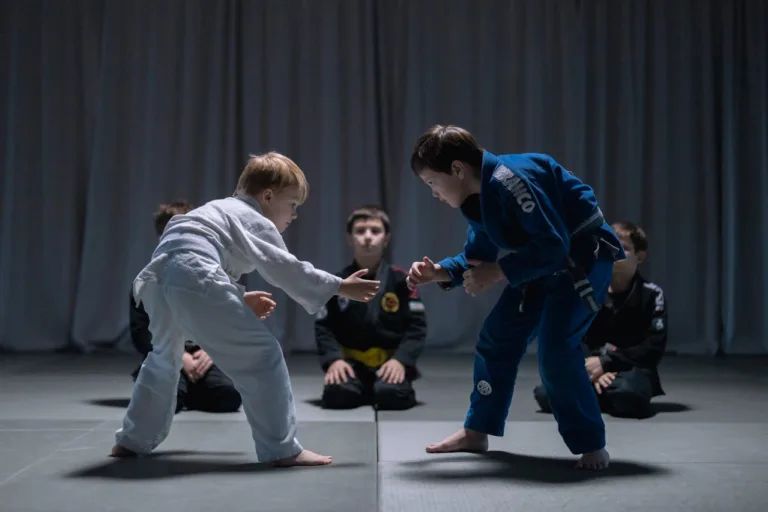Effective Discipline Strategies: A Guide for Parents
I am not a medical professional or a Ph.D. holder in child psychology. I am a father of four, navigating my way through the journey of parenthood. Each child is unique, and every situation presents its own challenges. Rather than dwelling on our mistakes, let’s embrace them as learning opportunities and grow through the process.
There are numerous individuals out there who can serve as sources of inspiration for parents: Dr. Benjamin Spock, Dr. T. Berry Brazelton, and Dr. Ross W. Greene, all renowned experts in their respective fields with valuable insights into child development and psychology. Surprisingly, my inspiration came from an unexpected source: Cesar Millan, known as ‘The Dog Whisperer.’ His composed demeanor, resolute determination, and consistent approach became valuable tools for me as a parent. The series aired from September 13, 2004, to September 15, 2012. I was 19 years old when I began learning the importance of maintaining calmness and assertiveness. At that point, I didn’t have children or a dog, but I recognized that these lessons could be applied to various aspects of life, particularly in raising children.
Boundaries and Limitations:
Children require clear boundaries and limitations. When these boundaries are established and understood by the child, they tend to become content and well-adjusted. For instance, before entering a grocery store, we would have a discussion in the car about our expectations. We’d communicate to the kids what behavior we expected from them: no running, no requesting toys or candy, and understanding that the answer to any request could be either yes or no, to which they would respond with “Yes, Mom” or “Yes, Dad.” We repeated this process every time we went out. The children didn’t experience anxiety or frustration because they knew the boundaries and limitations beforehand, and they remained consistent on each occasion.
I believe there isn’t a singular method of disciplining children, but I am convinced that consistency in whichever approach you choose is key to success.

Consistency:
Like many couples, my wife and I had vastly different upbringings. I was raised in a household with both a traditional mother and father, each fulfilling distinct roles. On the other hand, my wife was brought up by her single father. Consequently, we observed different approaches to discipline. While I experienced corporal punishment and timeouts, my wife recalls never being subjected to punishment; she simply didn’t seek trouble. In contrast, I somewhat enjoyed testing boundaries.
This contrast became a challenge when we began raising our own children. My wife struggled to determine appropriate responses to our kids’ misbehavior. Similar to the participants on Cesar Millan’s popular TV show, she adored our children so deeply that the thought of causing them harm was unthinkable. Witnessing our kids distressed would often make her feel as if she had failed.
There was a particular incident when our then three-year-old attempted to touch something despite my wife’s instructions not to. She warned him that touching it would result in a timeout. In response, he defiantly touched it and extended his hand, expecting her to lead him to his room. I remember realizing that children seek assurance that their parents are in control. In that moment, my wife was unsure of what to do, turning to me for guidance. I advised her to follow through with the consequence she had stated. Consistency in discipline is crucial; any wavering undermines authority. If a rule is set, it must be enforced, as giving in suggests to the child that there’s a possibility of changing the decision. “If I throw a tantrum or beg enough, maybe I’ll get what I want.”
Frequently, when my children would pester my wife for things, she would inquire why they didn’t approach me in the same manner. Their response was consistent: “We know Dad will say NO.” They were aware of and respected my boundaries and limitations. As my wife became more consistent in her approach, the children acted out less and experienced fewer frustrations.
Exercise, Discipline, and Affection:
Cesar Millan often emphasizes that dogs require three essential elements: exercise, discipline, and affection, prioritized in that sequence. I believe this principle also applies to children. When children receive both physical and mental stimulation, they are less prone to misbehavior.
Unfortunately, our priorities are often reversed, which is evident in both our children’s behavior and our beloved pets’ demeanor. Nowadays, children spend an excessive amount of time sitting—whether in classrooms, in front of screens, or at daycare centers, as many parents work long hours. By the time children return home, their parents are often too exhausted to engage in arguments or disciplinary actions. While parents undoubtedly love their children and strive to ensure their happiness, they may prioritize quality time over quantity. Consequently, children may lack sufficient exercise and discipline, despite receiving ample affection.
This scenario mirrors the recurring theme in each episode of “The Dog Whisperer.”

Physical Touch:
I shared something in common with Cesar Millan due to our upbringing, where “physical touch” wasn’t perceived as inherently negative or abusive. During my childhood, spanking was a form of discipline. Whenever I misbehaved, I would be sent to my room, eagerly awaiting my parents’ arrival for a discussion. With time, I came to realize that this period also allowed my parents to regain composure, depending on the circumstances. They would calmly explain my wrongdoing, followed by a gentle smack on the hand or, occasionally, the buttocks. I acknowledge the sensitivity of this topic, so I’ll approach it cautiously, mindful of Cesar’s own experiences with controversy.
In contrast, my wife, like many parents, struggled with the concept of using time-outs for our children. She adamantly opposed any form of physical discipline. Given my upbringing, where spanking was commonplace, it seemed natural for me to employ it as a disciplinary measure with my own children. I always believed that a well-administered spanking, when necessary, was less psychologically damaging than a parent resorting to yelling, door slamming, or furniture smashing. However, I reserved spanking as a last resort and consistently provided fair warnings. I would inform my children, “If you continue this behavior, you will receive a spanking,” and would often count to three.
For instance, suppose a child denies responsibility for breaking the TV screen when confronted with evidence to the contrary. I would issue a warning: “I will count to three, and if you do not tell the truth by then, you will go to your room for a spanking. One, two, my final count is…” After a brief pause for the child to respond, I would conclude with “three.” Following this, I would send the child to their room, following the same pattern my parents did—allowing a few minutes before entering the room. After administering the spanking, I would always embrace them and reaffirm my love for them.
Be Insync:
I eventually ceased spanking our children. Since my wife neither understood nor agreed with this method, I couldn’t persist. Consistency is crucial, and despite my own efforts to remain consistent, our approach as a unit was lacking. The children received conflicting messages, leading to imbalance. Both parents must be in sync.
The timing and tone you employ can significantly influence the child’s response. If you lose your temper one day when your child misbehaves but remain calm the next time they commit the same offense, you will only confuse and frustrate your child. Similarly, if you react strongly to a situation while your spouse remains calm, it creates inconsistency. Achieving consistency is challenging, but achieving synchronicity with your partner is even more so. Men and women naturally have different tones, but by supporting each other and employing consistent techniques, these differences can become less pronounced.

Mom vs Dad
Children are adept at noticing differences between Mom and Dad. Just the other day, while my wife was feeding our goats and refilling their hay, our 9-year-old son remarked that she did a much better job than me and that she filled up the hay much more than I did. I learned this because my wife shared it with me. Strangely, only a few days later, when it was my turn to feed the goats, he made almost identical comments to me.
It seems as though they feel the need to ensure the strength and unity of our family unit. We must consistently assess how we are parenting our children as a team. Arguing in front of the children is one of the worst things we can do.
Unfortunately, I witness this behavior frequently. Parents often converse as if the children are not present, believing that subtle remarks or whispered comments will go unnoticed. This assumption is incorrect. Children are remarkably perceptive, often sensing the slightest changes as if they possess a sixth sense that we lose as we age. It’s essential to find a suitable time and place for discussions. This approach not only benefits our children but also enhances the productivity of the conversation.

In conclusion, my journey through parenthood has been shaped by a multitude of experiences and lessons learned along the way. As a father of four, I’ve come to understand that every child is unique, and each situation presents its own set of challenges. Rather than fixating on our mistakes, it’s crucial to embrace them as opportunities for growth and learning. Parenting is a journey of continuous learning and adaptation. By acknowledging our mistakes, striving for consistency, and fostering unity as a parental unit, we can navigate the challenges of parenthood with confidence and grace. As James Joyce aptly said, “Mistakes are the portals of discovery,” and it’s through these mistakes that we evolve and grow as parents.







